Brewing Beer with Pale Ale Malt
Published: July 21, 2025 at 2:55:14 PM UTC
Last updated: December 12, 2025 at 4:18:20 PM UTC
Using pale ale malt in brewing can greatly improve the taste and smell of your beer. This malt is kilned a bit more than pale malt, leading to a deeper, richer flavor. This makes it a standout choice for those looking to enhance their brews. Pale ale malt brings a more distinct malt taste and aroma to the table. This makes it a favorite among brewers aiming to craft complex and unique beers. By adding pale ale malt to their recipes, brewers can create beers that truly stand out.
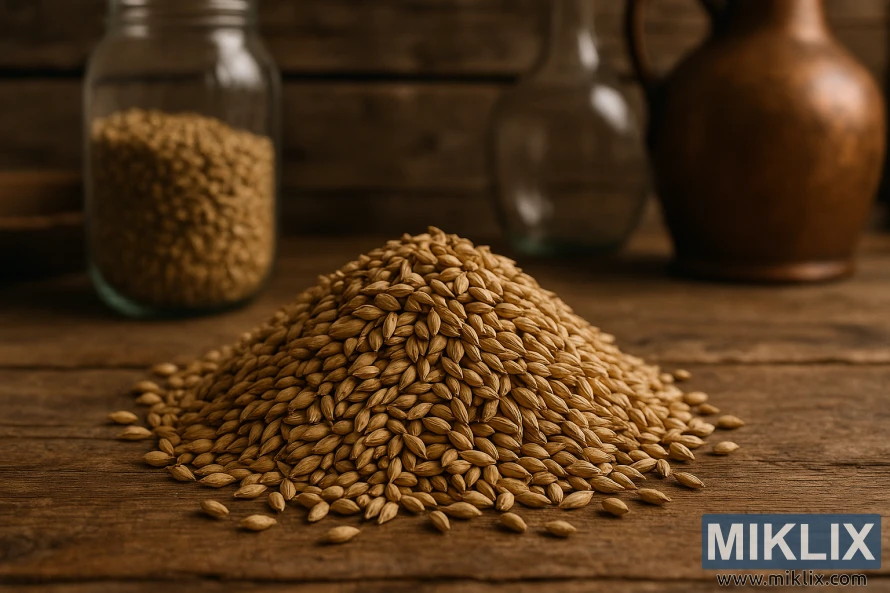
Key Takeaways
- Pale ale malt adds a richer flavor to beer.
- It is slightly more kilned than pale malt.
- The malt contributes to a more complex beer profile.
- Brewing with pale ale malt enhances the beer's aroma.
- It is a popular choice for creating unique beers.
Understanding Pale Ale Malt: The Foundation of Craft Brewing
For craft brewers aiming to craft high-quality beers, grasping Pale Ale Malt is key. This malt forms the core of many recipes, bringing a rich, complex flavor that defines the craft brewing scene.
Pale Ale Malt stands out due to its distinct traits. Its color, ranging from 2 to 4 Lovibond, imparts a light, golden appearance to beers. Its diastatic power, measuring its starch-to-sugar conversion ability, is ample for most brewing tasks. This facilitates a strong fermentation process.
The protein content in Pale Ale Malt is also vital. It affects the beer's body, head retention, and mouthfeel. A well-balanced protein level ensures the beer is neither too thin nor too thick, boosting its drinkability.
The attributes of Pale Ale Malt make it a preferred choice for brewers. Key advantages include:
- Rich, complex flavor profile
- Balanced protein content for optimal mouthfeel
- Sufficient diastatic power for robust fermentation
- Light, golden color suitable for a variety of beer styles
By harnessing these characteristics, brewers can craft a broad spectrum of beer styles. From pale ales to IPAs, each style boasts its unique flavor and aroma.
Chemical Composition and Characteristics
Grasping the chemical makeup of pale ale malt is key to crafting beer with the right flavor and aroma. The composition and traits of pale ale malt are vital for its suitability in brewing.
The moisture content in pale ale malt is critical. It impacts the malt's storage stability and its performance in brewing. Typically, it ranges from 3% to 5%.
Protein content and diastatic power are also essential. The protein content shapes the beer's body, head retention, and overall character. The diastatic power, on the other hand, determines the malt's starch conversion into fermentable sugars during brewing.
- Moisture content: 3% to 5%
- Protein content: influences beer's body and character
- Diastatic power: affects starch conversion during brewing
These specifications are critical for brewers. They directly influence the brewing process and the quality of the final product. By understanding the chemical composition and characteristics of pale ale malt, brewers can refine their techniques. This leads to producing high-quality beer with unique flavor profiles.
In conclusion, the chemical composition and characteristics of pale ale malt are essential for brewing top-notch beer. By analyzing malt specifications and their impact on brewing, brewers can make informed choices. This ensures the desired flavor and aroma in their beer.
How Pale Ale Malt Differs from Standard Pale Malt
Pale ale malt and standard pale malt are key ingredients in brewing, each with unique traits. They differ significantly in color, diastatic power, and protein content.
Pale ale malt has a higher color rating than pale malt. This contributes a richer, more pronounced malt flavor and aroma to the beer. This distinction is critical for achieving the desired taste in brewing.
Both pale ale malt and pale malt have similar diastatic power. This ensures they provide enough enzymatic activity for saccharification during mashing. Yet, pale ale malt has a slightly higher protein content. This can influence the beer's body and head retention.
When comparing pale ale malt to pale malt, brewers must consider their impact on the beer's style and character. The choice between the two malts hinges on the desired flavor profile and brewing goals.
Understanding the differences between pale ale malt and pale malt empowers brewers to make informed decisions. This leads to more consistent and high-quality brewing outcomes.
Impact on Beer Style and Character
Using pale ale malt in brewing can significantly change the taste and smell of different beer styles. Brewers can make beers with a more complex and intriguing character by adding pale ale malt to their recipes.
Pale ale malt brings a richer malt flavor and aroma compared to standard pale malt. This is very beneficial for beer styles that focus on malt, like amber ales and malty pale ales.
The effects of pale ale malt on beer style and character can be seen in several areas:
- Flavor: It adds a deeper, more complex malt flavor that complements hop profiles.
- Aroma: The malt aroma is more pronounced, enriching the overall aroma.
- Character: Beers made with pale ale malt often have a more complex character, appealing to a wide range of palates.
When brewing with pale ale malt, it's important to consider the specific beer style. For instance, using it in an IPA can enhance the malt backbone, balancing the hop bitterness and flavor. In a pale ale, it adds depth without overpowering the hops.
The versatility of pale ale malt makes it a valuable ingredient for brewers. It allows them to experiment with new recipes or refine existing ones. By understanding how pale ale malt influences the final product, brewers can craft beers that meet their desired style and character profiles.
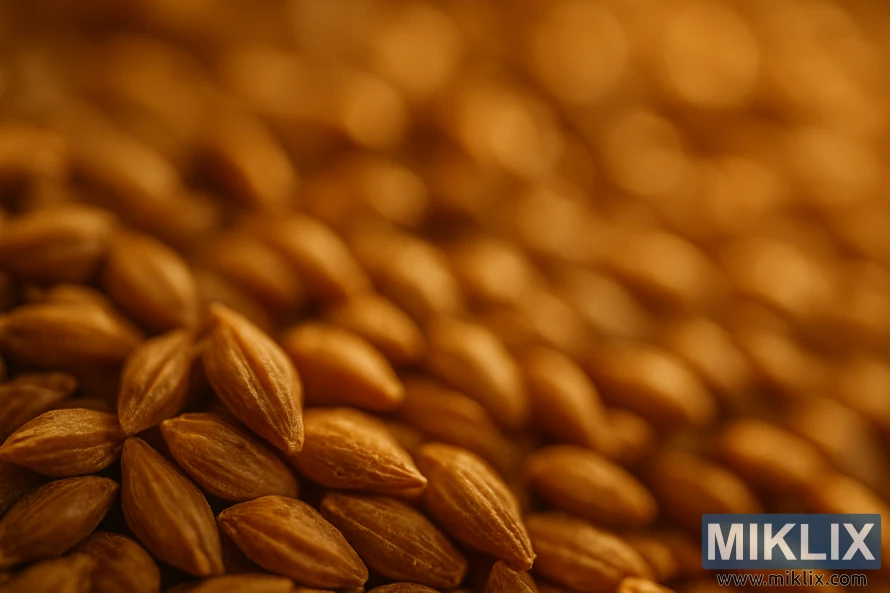
Essential Equipment for Brewing with Pale Ale Malt
Pale ale malt brewing requires specific equipment for mashing and fermentation. Brewers need the right tools to achieve optimal results.
The mashing process needs a mash tun to steep grains in hot water, extracting sugars. A false bottom or manifold is key in a mash tun, separating liquid from solids.
For fermentation, brewers must have a tank designed for brewing's needs. This includes temperature control and managing carbon dioxide produced during fermentation.
Other must-haves include a brew kettle for boiling wort, a cooling system, and aeration equipment before fermentation.
Having the right equipment ensures consistent, high-quality beer. Investing in quality brewing gear is essential for producing top-notch pale ale malt beers.
Optimal Mashing Techniques
Mashing with pale ale malt is an art that demands precision in temperature and pH control. This step is critical in the brewing process, where enzymes in the malt convert starches into fermentable sugars. The quality of the mash significantly influences the beer's character and quality.
To achieve optimal mashing, brewers must consider several key factors. These include:
- Temperature control: Maintaining the ideal temperature range for enzymatic activity.
- pH control: Ensuring the mash pH is within the optimal range for enzyme function.
- Grain-to-water ratio: Balancing the ratio to achieve the desired sugar extraction.
Temperature control is vital because enzymes responsible for converting starches into fermentable sugars are temperature-sensitive. Most brewers aim for a temperature between 152°F and 155°F for a balanced sugar profile.
pH control is equally important as it affects enzyme activity and stability. The optimal pH range for mashing is generally considered to be between 5.2 and 5.5. Outside this range, enzyme activity can be significantly impaired, leading to suboptimal sugar conversion.
To summarize, optimal mashing techniques involve:
- Monitoring and adjusting the mash temperature to the optimal range.
- Adjusting the mash pH to fall within the optimal range.
- Maintaining an appropriate grain-to-water ratio.
By mastering these elements, brewers can ensure a high-quality mash that contributes to a superior final product when brewing with pale ale malt.
Water Chemistry Considerations
The quality of water in brewing is critical, and grasping water chemistry is key for the desired flavor in beers made with pale ale malt. Water chemistry influences not just taste but also the brewing process, from mashing to fermentation.
Water quality is defined by its chemical makeup, including pH, hardness, and the presence of ions like calcium, magnesium, and sulfate. These elements play a significant role in brewing. For example, calcium is vital for enzyme activity during mashing, while sulfate can boost hop flavor and aroma.
Adjusting water chemistry is essential for brewers. The first step is to analyze the water's chemical profile. This can be achieved through a water test, which measures ion levels and pH. Based on these results, brewers can make necessary adjustments to optimize water chemistry for brewing with pale ale malt.
There are several methods to adjust water chemistry, including:
- Adding salts or minerals to the water to adjust the ion profile.
- Using water treatment technologies such as reverse osmosis or deionization to remove or adjust ion levels.
- Blending different water sources to achieve the desired chemical profile.
Water treatment is a critical aspect of brewing, as it directly influences the quality and consistency of the final product. By understanding and controlling water chemistry, brewers can manage the brewing process better and produce high-quality beers with consistent flavors.
Water chemistry considerations also extend to brewing equipment. Water with high mineral levels can cause scaling or corrosion in equipment, impacting its lifespan and performance.
Recipe Development Using Pale Ale Malt
Creating a recipe with pale ale malt requires a deep understanding of its unique characteristics. These traits significantly impact the final beer's taste and aroma. Its popularity among brewers stems from its distinct flavor and aroma, yet careful consideration is needed in the recipe formulation process.
Pale ale malt offers a more pronounced malt flavor and aroma compared to standard pale malt. Brewers must think about how these traits will blend with other ingredients. This careful selection and adjustment of brewing techniques are essential to achieve the desired beer character.
When developing a recipe, balancing the flavor and aroma of pale ale malt is key. This balance can be achieved by adjusting the amount of pale ale malt used. Brewers might also incorporate specialty malts and hops to enhance the beer's complexity. For instance, combining pale ale malt with a small amount of crystal malt can add depth to the flavor profile.
Formulating a successful recipe also involves considering brewing techniques. Factors like mashing temperatures, sparging methods, and boil times all play a role in the beer's final character. By fine-tuning these elements, brewers can craft a recipe that highlights pale ale malt's unique qualities.
- Consider the flavor and aroma profile desired for the final beer.
- Select a combination of ingredients that complement the characteristics of pale ale malt.
- Adjust brewing techniques to optimize the extraction of flavors and aromas from the pale ale malt.
- Experiment with different proportions of pale ale malt in the grain bill to achieve the desired balance.
By adhering to these guidelines and understanding pale ale malt's characteristics, brewers can create high-quality beers. Whether brewing a pale ale, IPA, or another style, using pale ale malt thoughtfully can enhance the beer's character. This appeals to beer enthusiasts seeking unique and complex flavors.
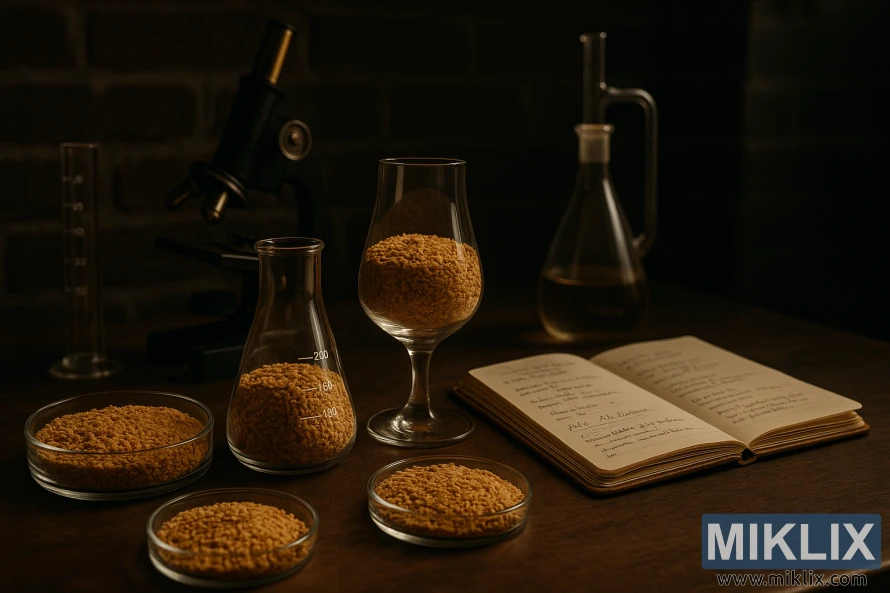
Common Brewing Challenges and Solutions
Creating the perfect brew with pale ale malt requires understanding and overcoming common challenges. Brewers often face issues that can impact the quality and character of their beer. It's essential to recognize these challenges and know how to address them for high-quality brews.
One major challenge is maintaining the optimal mash temperature. Temperature variations can significantly affect enzymatic activity, leading to inconsistent flavors. Managing water chemistry is also a challenge, as the mineral content can greatly influence the beer's taste and clarity.
To overcome these challenges, brewers can use several strategies. For temperature control, a high-quality thermometer and consistent mash temperature are key. For water chemistry, understanding the mineral profile and making necessary adjustments can help achieve the desired flavor.
Troubleshooting is a critical skill for brewers. Issues like off-flavors, haze, or fermentation problems often stem from contamination, improper sanitation, or incorrect yeast pitching rates. By identifying the root cause, brewers can take corrective action to prevent future problems.
Adopting best practices in brewing can significantly reduce common challenges. Regular equipment maintenance, thorough sanitation, and precise control over brewing parameters are essential. These practices ensure a more consistent and higher quality product.
Brewing with pale ale malt demands attention to detail and adaptability to challenges. By understanding common brewing challenges and implementing effective solutions, brewers can produce high-quality beers that showcase the unique characteristics of pale ale malt.
Fermentation Considerations and Best Practices
To achieve optimal results when brewing with pale ale malt, brewers must carefully manage the fermentation process. Fermentation is a critical step that can significantly impact the final character and quality of the beer.
The fermentation temperature is a key factor in brewing with pale ale malt. Most ale yeasts ferment best between 65°F to 75°F (18°C to 24°C). Yet, the optimal temperature range can vary based on the specific yeast strain. For instance, some yeast strains may require cooler temperatures to produce the desired flavor profile.
Yeast selection is another vital consideration in the fermentation process. Different yeast strains can impart unique characteristics to the beer, such as fruity or floral notes. When brewing with pale ale malt, it's essential to choose a yeast strain that complements the malt's flavor and aroma profile.
Here are some best practices for fermentation when brewing with pale ale malt:
- Monitor fermentation temperature closely to ensure it remains within the optimal range for the chosen yeast strain.
- Pitch the correct amount of yeast to avoid under or over-pitching, which can lead to fermentation issues.
- Ensure proper aeration of the wort before pitching the yeast to provide the necessary oxygen for healthy yeast growth.
- Maintain a clean and sanitized brewing environment to prevent contamination and spoilage.
By carefully managing the fermentation process and following best practices, brewers can achieve optimal results when brewing with pale ale malt. This includes producing a high-quality beer with a balanced flavor and aroma profile.
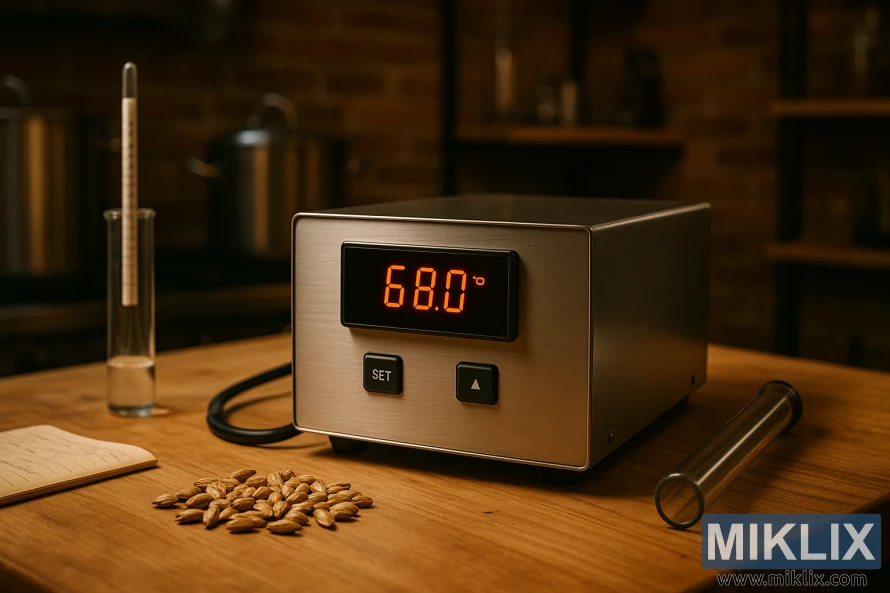
Quality Control and Assessment
Quality control is essential in brewing, affecting the final product's character and quality. It's vital to ensure every step, from ingredient selection to packaging, meets high standards. This is key to producing exceptional beer.
To achieve optimal results, brewers must implement a detailed quality control and assessment protocol. This involves evaluating the beer's quality and character through sensory analysis and laboratory testing.
Key aspects of quality control include monitoring ingredient quality, controlling brewing parameters, and assessing the final product's flavor, aroma, and appearance. Identifying and addressing issues early on helps prevent quality problems and ensures consistency.
- Regularly inspect ingredients and brewing equipment.
- Monitor brewing parameters, such as temperature and pH.
- Conduct sensory analysis and laboratory testing on the final product.
By maintaining a rigorous quality control regimen, brewers can produce high-quality beer. This meets consumer expectations and enhances their reputation in the market.
Storage and Handling Best Practices
Keeping pale ale malt fresh and of high quality demands careful storage and handling. The right storage conditions are key to preserving the malt's flavor and aroma. These are vital for creating top-notch beer.
For effective storage, it's essential to keep the malt in a cool, dry spot. The best temperature range is 50°F to 70°F (10°C to 21°C), with low humidity. This prevents mold growth and malt degradation.
- Use airtight containers to store the malt, minimizing exposure to air and moisture.
- Keep the storage area clean and free from contaminants.
- Avoid storing malt near strong-smelling substances, as it can absorb odors.
- Implement a first-in, first-out inventory system to ensure older stock is used before it degrades.
By adhering to these storage and handling guidelines, brewers can keep their pale ale malt fresh. This leads to better brewing results.
Troubleshooting Common Issues
Common problems can pop up during brewing, and knowing how to fix them is key to getting the best results with pale ale malt.
Using pale ale malt can lead to inconsistent flavors and fermentation issues. To tackle these problems, brewers need to pinpoint their causes.
- Inconsistent malt quality affecting flavor and aroma
- Fermentation problems leading to off-flavors or incomplete fermentation
- Mashing issues resulting in inefficient sugar extraction
To solve these issues, brewers can take several steps:
- Verify the quality and specifications of the pale ale malt being used
- Adjust mashing techniques and temperatures to optimize sugar extraction
- Monitor fermentation conditions closely to prevent off-flavors and ensure complete fermentation
By understanding the causes of common brewing issues and applying effective troubleshooting strategies, brewers can enhance their beer's quality and consistency.
Conclusion
Mastering pale ale malt brewing demands a deep grasp of the brewing process and its influencing factors. Understanding pale ale malt's characteristics and its distinction from standard pale malt is key. This knowledge enables brewers to craft unique and complex beer styles.
Optimal results hinge on proper techniques and equipment. Each step, from mashing to fermentation, is vital in shaping the final beer. By adhering to best practices and addressing common issues, brewers can enhance their craft. This leads to the production of high-quality beers.
In summary, pale ale malt brewing is a detailed process that requires dedication and a spirit of experimentation. By applying the knowledge and techniques discussed in this article, brewers can fully exploit pale ale malt's capabilities. This results in exceptional beers that highlight its unique traits. Remember, the path to mastering pale ale malt brewing is continuous. Ongoing learning and practice are vital for success.
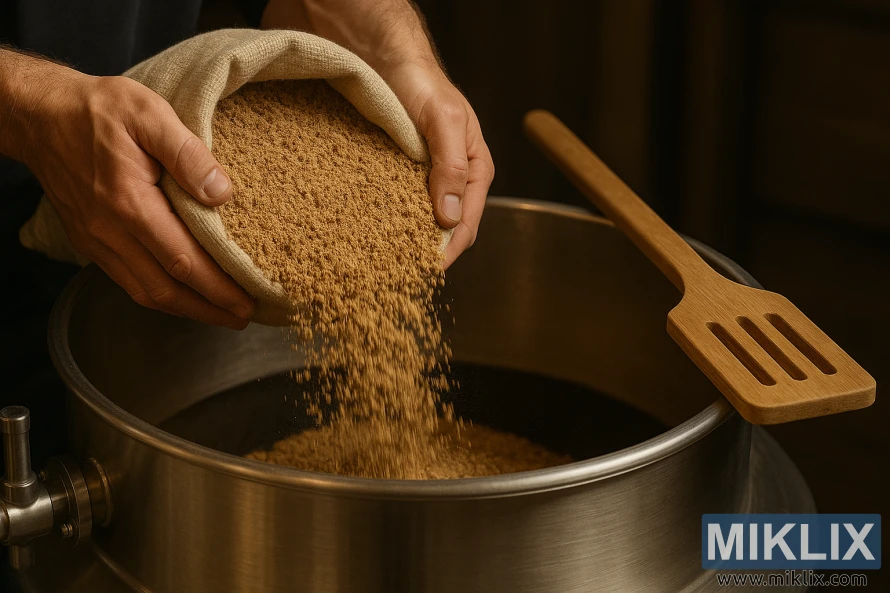
Further Reading
If you enjoyed this post, you may also like these suggestions:
